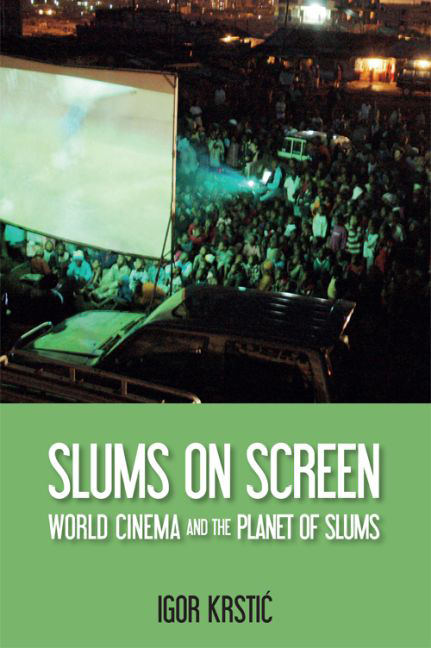Book contents
- Frontmatter
- Contents
- List of Figures
- Acknowledgements
- Introduction
- 1 Slums on and off Screen
- Part One Global Currents
- 2 Sensational Remediations
- 3 Documentary Mappings
- 4 Neorealist Narratives
- 5 Third Docufictions
- 6 Postmodern Bricolages
- 7 Digital Realisms
- Part Two Local Expressions
- Conclusion
- Bibliography
- Index
4 - Neorealist Narratives
from Part One - Global Currents
- Frontmatter
- Contents
- List of Figures
- Acknowledgements
- Introduction
- 1 Slums on and off Screen
- Part One Global Currents
- 2 Sensational Remediations
- 3 Documentary Mappings
- 4 Neorealist Narratives
- 5 Third Docufictions
- 6 Postmodern Bricolages
- 7 Digital Realisms
- Part Two Local Expressions
- Conclusion
- Bibliography
- Index
Summary
The post-war period has greatly increased the situations which we no longer know how to react to, in spaces which we no longer know how to describe. These were ‘any spaces whatever’ …
Gilles DeleuzeA group of boys chant ‘Ole, ole, ole!’. They seem to be around 10 to 12 years old; some of them are perhaps younger, others slightly older. From a safe distance we see them playing a game in a vacant square. It is bullfighting – also an adult's game, of course, but a violent one that involves the killing of an animal. We are in Mexico City, as an off-screen narrator has informed us during the film's prologue. The setting reveals that we are probably in the middle of an inner city area and the camera angle forces us to look at the bullfighting boys as well as at the square and what's in it: there is a ladder, some barrels, wooden boxes, a pillar – objects that have once been in use, but are now discarded. This is a square that has been forgotten by the city authorities – as forgotten as the boys who are playing in it. There is a wall in the foreground, swiftly assembled it seems, built from random stones and planks. At first the camera remains behind this wall to frame the square with a master shot as a whole – distanced, cold, neutral – continuing the documentary-like prologue to the film. But a brisk cut follows and we are suddenly amidst the action, suggesting that we are now entering a less dispassionate world. Accordingly, the camera now provides us with a more unusual – or cinematic – perspective: it looks up from near the ground, making the kids (and their bullfight) appear to be perilously large. The next cuts bring us even closer to the action; point of view shots enable us to assume the visual perspective of the boys. We see the bull and the matador up close, as if through their eyes. The older boy, pretending to be the matador, looks provocatively into the camera, ready and prepared to stab the younger boy – who is playing a raging bull – to death.
- Type
- Chapter
- Information
- Slums on ScreenWorld Cinema and the Planet of Slums, pp. 91 - 114Publisher: Edinburgh University PressPrint publication year: 2016



